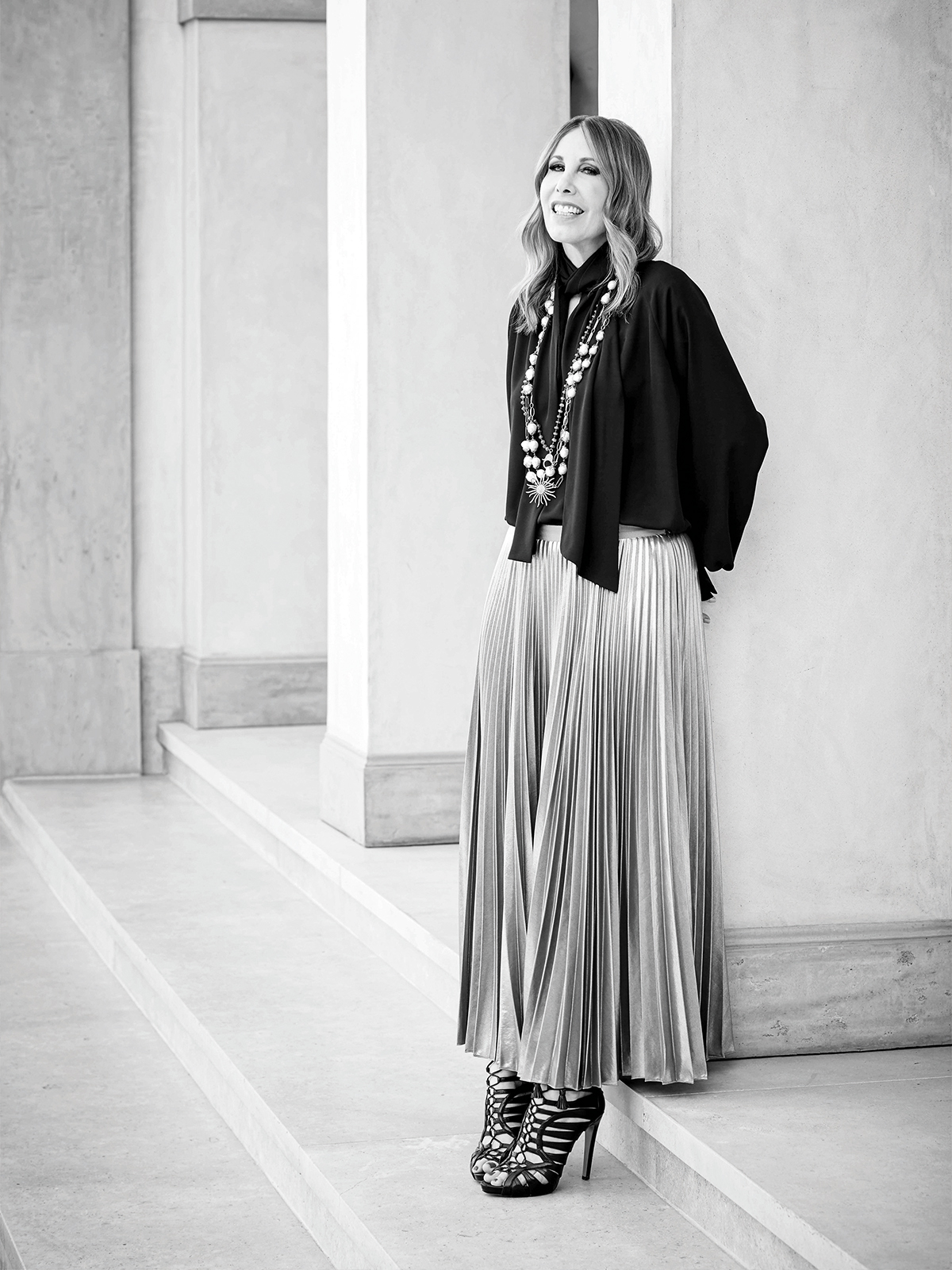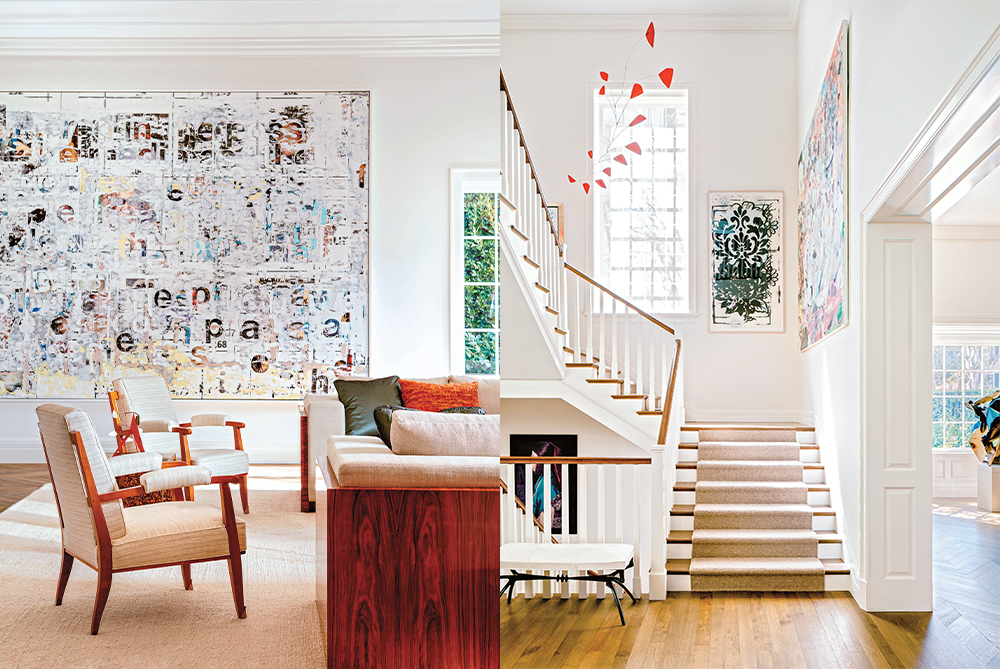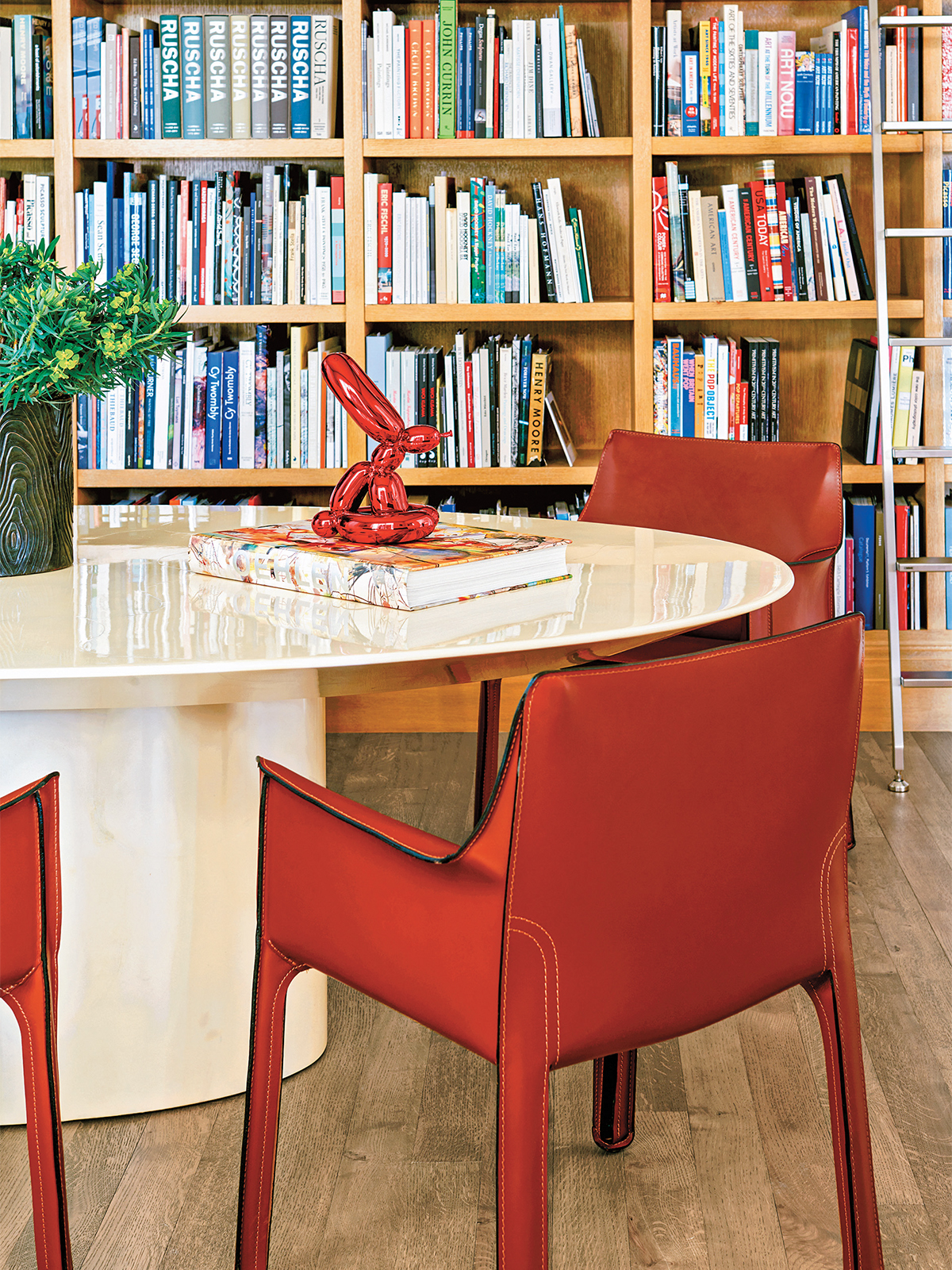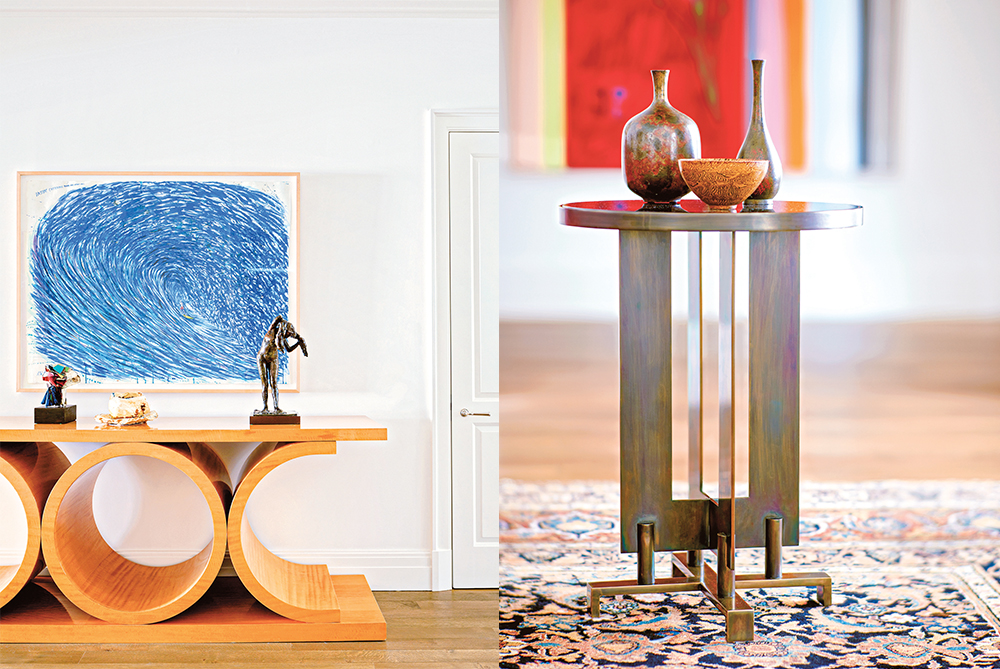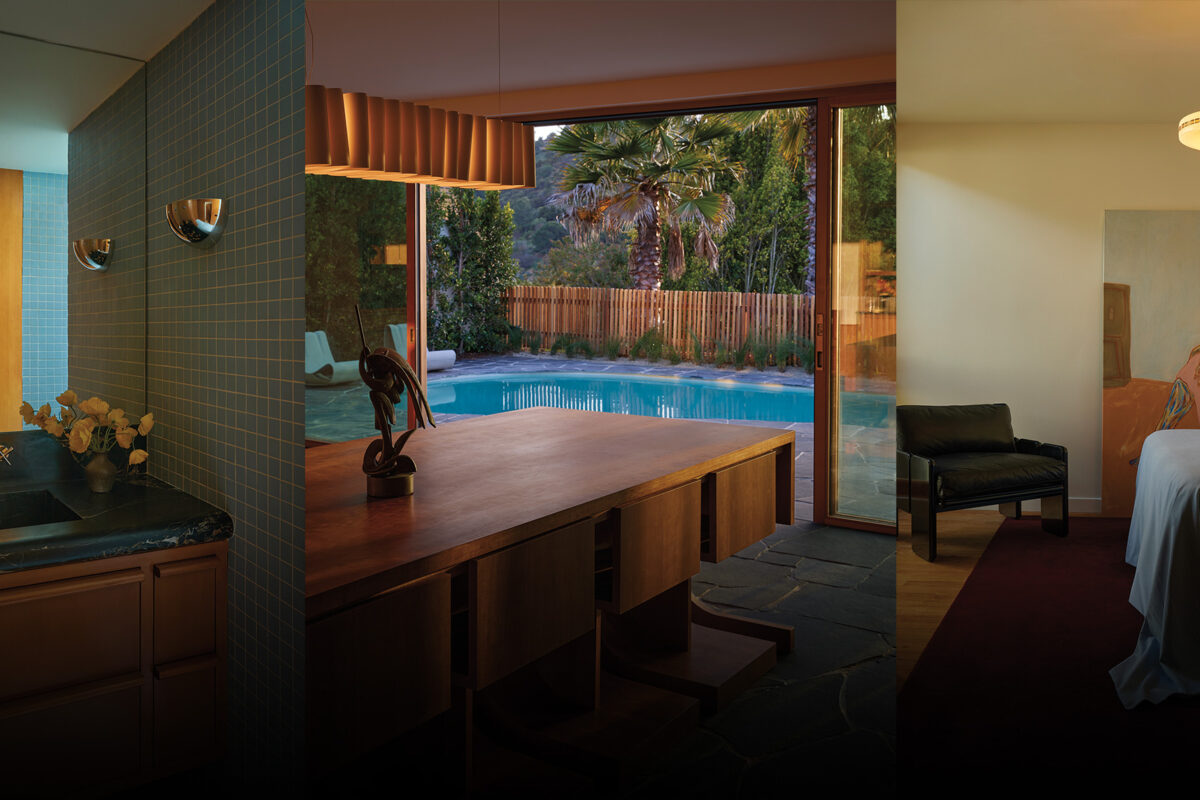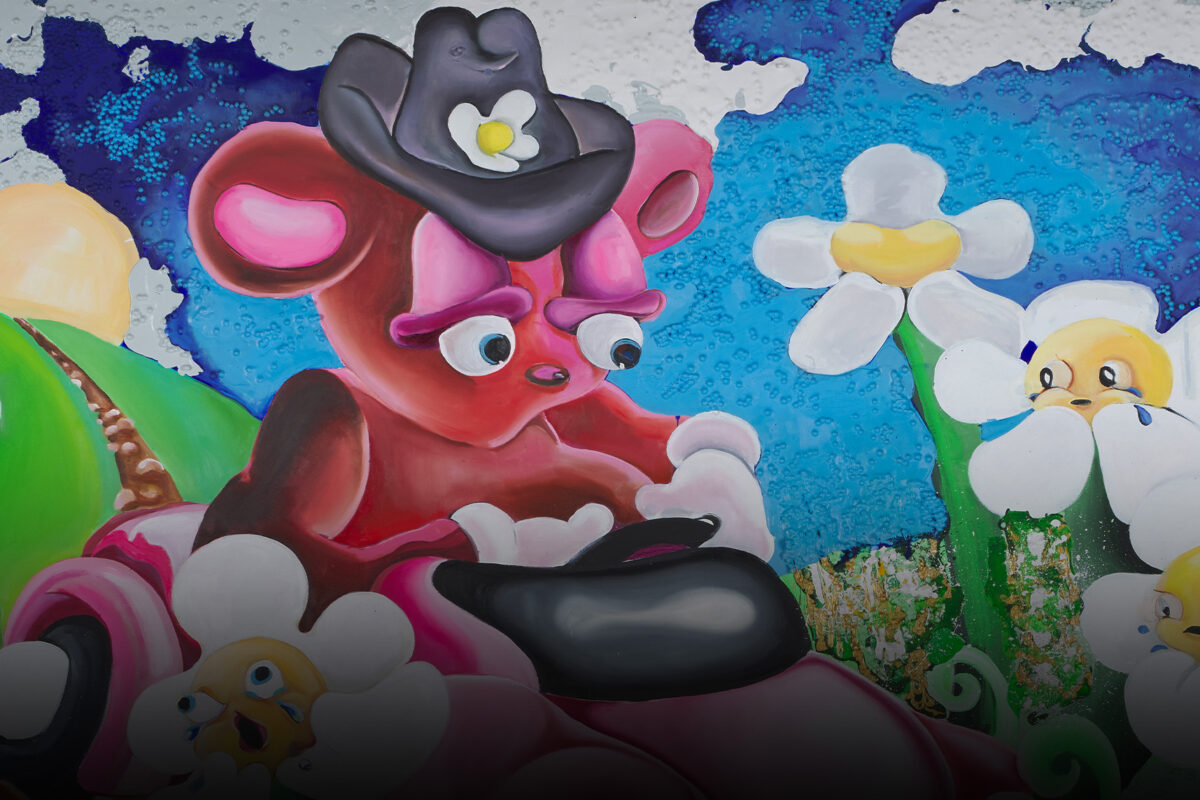Aesthete Madeline Stuart concepted an entire abode around a couple’s curation of priceless contemporary works
Words by MARTHA McCULLY
Photography by TREVOR TONDRO
When interior designer Madeline Stuart’s father, the legendary director Mel Stuart, wrapped filming Willy Wonka & the Chocolate Factory in 1970, he gave her a locket with the following inscription: “We are the music makers. We are the dreamers of dreams.” Stuart says, “It’s my father’s directive — and his artistic credo — that I try to put into practice every day.” Stuart has become a master of her own medium, having spent three decades honing her craft and developing a vast knowledge of design, art and architecture — and an impressive portfolio to show for it. But that’s not to say some projects aren’t more challenging than others.
“I wanted this house to defer to the collection and not just feel like a gallery”
For a discerning Southern California couple with a collection of some of the finest and most bankable artists of the last century, from Alexander Calder to David Hockney, Stuart, who is known for layered interiors with rich textures and colors, had to restrain herself and come up with creative solutions to let the art be the star and the furnishings play the supporting cast. “I wanted this house to defer to the collection first and foremost and to not just feel like an art gallery with a few seating areas in it,” Stuart says.
So in this classic Georgian white brick house with a crisp contemporary interior, she avoided the “low-slung Italian look. That’s too predictable and cold.” Instead she opted for chic yet calm, with each piece standing in its own right, such as the little Parsons table in the living room. “It couldn’t be simpler, but it just happened to be a Jean-Michel Frank table purchased by Frances Elkins from Frank himself for the Kersey Coates Reed house in Lake Forest, Illinois. To know that just makes me weak in the knees,” says Stuart, who says she is neither a traditionalist nor a modernist, but a lover of authenticity.
The owners had raised their family in a traditional Tudor-style house with heavy English antiques without exploring a way to stylistically incorporate the artwork and the furniture. In their new home, they wanted the opportunity for a viewer to stand back and appreciate each Richard Diebenkorn and Frank Stella in its own space without feeling crowded, indeed a unique and wonderful problem to have. So along with her clients, Stuart made subtle design decisions to do just that.
The walls are various shades of white. “Donald Kaufman is my go-to,” she says of the custom-blended hues that were carefully chosen to accommodate the light and elements in each room. “A white on the east side of the house is going to look very different than on the west side,” Stuart says. Stuart did upholster the walls in the den with a taupe-y linen fabric so it feels warm and cozy, serving as the perfect backdrop for the Julie Mehretu and Willem de Kooning paintings and Degas sculpture.
Architecturally, the backgrounds had to be very clean and subdued, “no cake decoration, elaborate moldings or paneling or anything that would prevent the artwork from being placed or seen to its best advantage,” Stuart says. Oak floors were inspired by gallery flooring. Although wood flooring has gone through extreme swings of late from ebonized to bleached, “these are not dark nor light, just quiet and warm, the color and feeling of what you would find in an art gallery in Paris or New York.”
Extremely high ceilings were designed to accommodate artwork, one of the features she worked closely with architect Marc Appleton on, though the Morris Louis and Mark Bradford paintings really dictated the 12-foot height of the living room. These works not only needed to be moved in, but also moved out on loan occasionally.
“Seeing my interiors as backgrounds for works by Richard Diebenkorn and David Hockney is absolute bliss”
In the dining room (with a Madeline Stuart Collection custom walnut table that expands to seat 24), instead of windows flanking the fireplace, there are two Ellsworth Kelly paintings. In place of lamps in the living room, which might block the view of the Frank Stella painting, there is a Claes Oldenburg pie sculpture and an Alexander Calder stabile on the tabletops.
Similarly, there are almost no window treatments in the house. “They would have been distracting, fussy and unnecessary,” Stuart says. Instead of pattern and color, there’s texture, such as the living room sofas with handwoven linen velvet fabrics by Chapas Textiles of Brooklyn, N.Y. Nubby rugs specially woven by Tai Ping add depth and richness to the room.
Though the art really is the star, this also had to be a house for entertaining and family gatherings, or a place where the owners could have a glass of wine and a conversation in the living room, feeling the vibe and soul of great art. “This is definitely a home,” Stuart says. And for her, a dream-come-true project. “As someone whose fantasy is to own even just a single piece by one of these artists, seeing my interiors as backgrounds for works by Richard Diebenkorn and David Hockney is absolute bliss. Who could ask for anything more?”
Feature image: At one end of the living room of the MADELINE STUART-designed home, a FRANK STELLA painting presides over a neutral textured sofa and a pair of Italian chairs from the 1940s. A CLAES OLDENBURG pie sculpture sits atop the ROBERT KUO side table. The curule-form stools are from New York antiques dealer LEE CALICCHIO.
Photos excerpted from NO PLACE LIKE HOME: INTERIORS BY MADELINE STUART (Rizzoli New York, $55).
This story originally appeared in the October 2019 issue of C Magazine.
Discover more DESIGN news.


